Tobago
Author: Bruce Allen
Publisher: The Game Master / Zoch Verlag
Year: 2009
review by

| x |
|
|
|
|
|
|
|
|
|
|
|
|
|
|
|
|
|
|
|
|
|
|
|
|
|
|
|
|
|
|
|
|
|
|
|
|
|
|
|
|
|
|
|
|
|
|
|
|
|
|
|
|
|
|
|
|
|
|
|
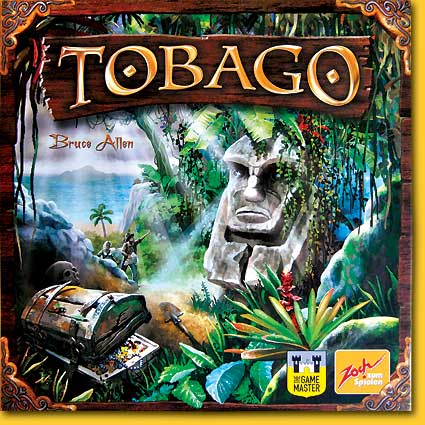 |
Players are treasure hunters on the island of Tobago. The game board that represents this tropical island must first be constructed from three sections, which can be flipped and shifted, making it possible to construct up to 32 different Tobagos. The resulting island consists of different terrain areas: beach, jungle, river, scrubland, water, and mountain. After the palm trees, huts and mysterious statues have also been placed on the island, we are ready for our hunt for the four treasures said to be hidden on the island. When a treasure is found the players that contributed to the finding will get their share, which consists of a number of gold coins. The more a player contributed the more coins he will receive. At the end the player with the most gold coins wins the game.
|
|
|
|
|
|
| x |
|
|
|
|
|
|
|
|
|
|
|
|
|
|
|
|
|
|
|
|
|
|
|
|
|
|
|
|
|
|
|
|
|
|
|
|
|
|
|
|
|
|
|
|
|
|
|
|
|
|
|
|
|
|
|
|
|
|
|
| Each player owns an ATV in his playing colour that is placed on the island at the start of the game. The vehicle is necessary to be able to raise a discovered treasure. The players are given a number of tokens, called compass roses, in their colour, to mark their contribution to the treasure hunts. Furthermore, the players are dealt a number of cards that will be the clues where a certain treasure is hidden. An essential element of Tobago is in fact that the players will determine where the treasures can be found, by playing these clue cards. The clue cards indicate, for instance, that a treasure is hidden next to the largest jungle area, next to any jungle, or within two spaces. However, the cards can also exclude certain areas; not in any mountain area, or not next to a hut. Whatever combination of the 32 Tobagos is used, there will always be a largest jungle, beach, etc. |
|
|
|
|
|
|
|
| x |
|
|
|
|
|
|
|
|
|
|
|
|
|
|
|
|
|
|
|
|
|
|
|
|
|
|
|
|
|
|
|
|
|
|
|
|
|
|
|
|
|
|
|
|
|
|
|
|
|
|
|
|
|
|
|
|
|
|
|
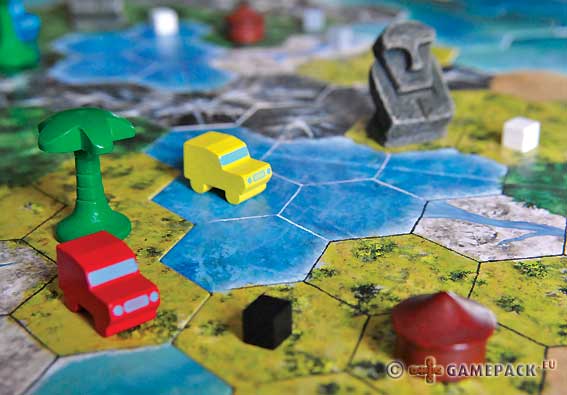 |
|
In a turn a player may either play one clue card, or move his ATV. The first option will be chosen most frequently and consists of placing a card next to this treasure’s area next to the board. The player marks his contribution by placing one of his compass roses on this card. By playing this card the possible places where the treasure must be reduced while not being reduced to zero.
|
|
|
|
|
|
| x |
|
|
|
|
|
|
|
|
|
|
|
|
|
|
|
|
|
|
|
|
|
|
|
|
|
|
|
|
|
|
|
|
|
|
|
|
|
|
|
|
|
|
|
|
|
|
|
|
|
|
|
|
|
|
|
|
|
|
|
By playing the card 'in the largest jungle' for instance, the number of possible places typically reduces the finding place to about eight. A clue card 'next to a palm tree' could further narrow the possible locations down to 3 to 4. When the number of possible locations is reduced to a reasonable amount, these places are marked on the island with little cubes in the treasure’s colour. When the finding place is determined, it is time for a player to start his ATV and drive to this location. This move allows a player to drive three legs, where a leg is either movement within the same terrain, or changing from one terrain type to another one.
|
|
|
|
|
|
| x |
|
|
|
|
|
|
|
|
|
|
|
|
|
|
|
|
|
|
|
|
|
|
|
|
|
|
|
|
|
|
|
|
|
|
|
|
|
|
|
|
|
|
|
|
|
|
|
|
|
|
|
|
|
|
|
|
|
|
|
| Is the exact location of a treasure defined, and an ATV has arrived at this location, the treasure can be raised. Before this is done the player who triggered this may add an additional compass rose to this treasure. Next, treasure cards will be distributed among the players that contributed to this treasure’s discovery. The treasure cards show two to six gold coins that are the actual goal of the game. Each player is dealt a number of treasure cards equal to the number of compass roses. The player may secretly look at these cards, and then give them to the player who will now perform the actual distribution. |
|
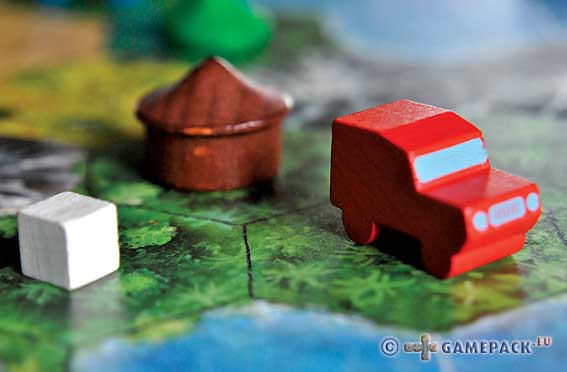 |
|
|
|
x
|
|
|
|
|
|
|
|
|
| This player adds one, unknown, treasure card, and shuffles this small stack. The topmost card is turned up and, beginning with the player who raised the treasure, the involved players are asked whether they want to have this treasure card. If a player takes it, his compass rose is removed, and the next treasure card is turned up. Players asked in the order that they contributed to the hunt. When nobody wants to have the treasure card, it is removed from the game. This continues until the stack of treasure cards is exhausted. |
|
|
|
| x |
|
|
|
|
|
|
|
|
|
|
|
|
|
|
|
|
|
|
|
|
|
|
|
|
|
|
|
|
|
|
|
|
|
|
|
|
|
|
|
|
|
|
|
|
|
|
|
|
|
|
|
|
|
|
|
|
|
|
|
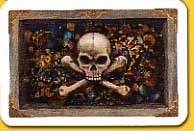 |
What makes the game more interesting is the presence of two so-called curse cards that are shuffled into the treasure card deck. When one of these is turned up during the distribution this treasure is cursed and no players received any more treasure cards. Furthermore, each involved player must discard his most valuable treasure card if he is not able to discard a protective amulet.
|
|
|
| x |
|
|
|
|
|
|
|
|
|
|
|
|
|
|
|
|
|
|
|
|
|
|
|
|
|
|
|
|
|
|
|
|
|
|
|
|
|
|
|
|
|
|
|
|
|
|
|
|
|
|
|
|
|
|
|
|
|
|
|
|
These amulets appear in the game each time a treasure is raised: each statue attracts one amulet from the sea, so they appear at the shore of the island. After this the statues are rotated 60 degrees, so that next time the three amulets will appear at different locations. The amulets can be picked up by the players using their ATVs, sacrificing a player’s turn to do so. The amulets are not only necessary to protect against cursed treasures, but can also give nice extras: an complete extra turn, or speeding up a treasure’s discovery.
|
|
 |
| x |
|
|
|
|
|
|
|
|
|
|
|
|
|
|
|
|
|
|
|
|
|
|
|
|
|
|
|
|
|
|
|
|
|
|
|
|
|
|
|
|
|
|
|
|
|
|
|
|
|
|
|
|
|
|
|
|
|
|
|
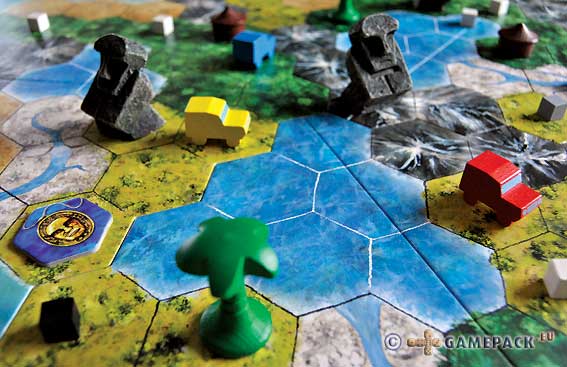 |
|
The game ends when all treasure cards have been distributed. Players count their gold coins on their treasure cards, and the player with the most coins wins. |
|
|
| x |
|
|
|
|
|
|
|
|
|
|
|
|
|
|
|
|
|
|
|
|
|
|
|
|
|
|
|
|
|
|
|
|
|
|
|
|
|
|
|
|
|
|
|
|
|
|
|
|
|
|
|
|
|
|
|
|
|
|
|
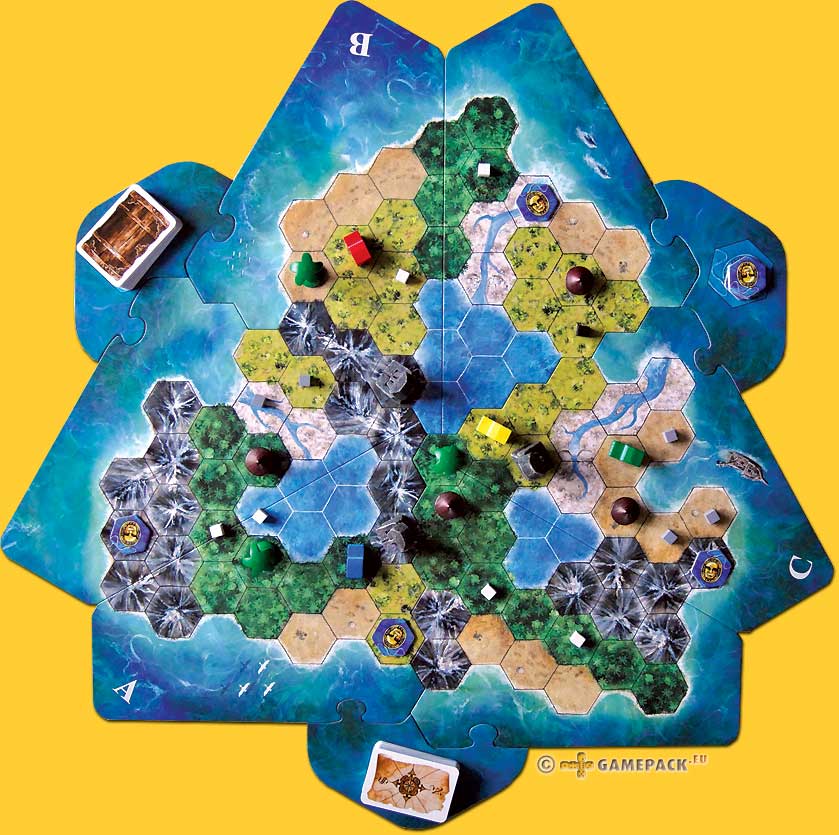 |
| x |
|
|
|
|
|
|
|
|
|
|
|
|
|
|
|
|
|
|
|
|
|
|
|
|
|
|
|
|
|
|
|
|
|
|
|
|
|
|
|
|
|
|
|
|
|
|
|
|
|
|
|
|
|
|
|
|
|
|
|
| x |
|
|
|
|
|
|
|
|
|
|
|
|
|
|
|
|
|
|
|
|
|
|
|
|
|
|
|
|
|
|
|
|
|
|
|
|
|
|
|
|
|
|
|
|
|
|
|
|
|
|
|
|
|
|
|
|
|
|
|
| x |
|
|
|
|
|
|
|
|
|
|
|
|
|
|
|
|
|
|
|
|
|
|
|
|
|
|
|
|
|
|
|
|
|
|
|
|
|
|
|
|
|
|
|
|
|
|
|
|
|
|
|
|
|
|
|
|
|
|
|
 |
|
|
|
|
|
|
|
|
|
|
|
|
|
|
|
|
|
|
|
|
|
|
|
|
|
|
|
|
|
|
|
|
|
|
|
|
|
|
|
|
|
|
|
|
|
|
|
|
|
|
|
|
|
|
|
|
The first impression of 'Tobago' is its marvellous look. The modular game board, the components, it all looks very lovely and invites to play. The somewhat unusual game play takes some time to get used to, but after one or two discoveries it starts to make sense. The players should focus on contributing to as many treasure hunts as possible, but one amulet is also required to get protection against the any curses. When a treasure is raised, some bluffing is needed to get the best coin cards.
|
|
|
| x |
|
|
|
|
|
|
|
|
|
|
|
|
|
|
|
|
|
|
|
|
|
|
|
|
|
|
|
|
|
|
|
|
|
|
|
|
|
|
|
|
|
|
|
|
|
|
|
|
|
|
|
|
|
|
|
|
|
|
|
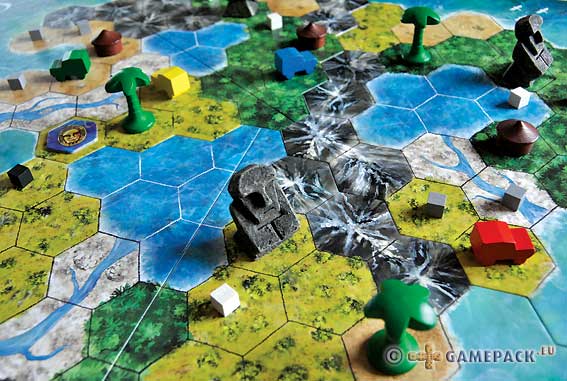 |
In the beginning of the game a player does not have many options. Moving his ATV does not make sense: no treasure locations and known and no amulets are available. Focus should be on contributing to a hunt, and obtaining the gold coins for that. After amulets have become available players options increase and players will have to make optimal use of their turn and amulets. |
|
|
| x |
|
|
|
|
|
|
|
|
|
|
|
|
|
|
|
|
|
|
|
|
|
|
|
|
|
|
|
|
|
|
|
|
|
|
|
|
|
|
|
|
|
|
|
|
|
|
|
|
|
|
|
|
|
|
|
|
|
|
|
The treasure card distribution introduces a lot of randomness to the game; there is no control over what treasure cards will be raised. However, due to the limited game duration, and the options that the amulets give, this should not be a problem for the more experienced player. Moreover, this game is typically focused on families, with its gorgeous presentation and its main thrill based on treasure hunting. With this in mind, it is surprising that this game was not taken into account with any of the (German) game prizes as it is without a doubt one of the best family games available at the moment.
© 2011 Edwin van de Sluis
Tobago, Bruce Allen, The Game Master/Zoch Verlag, 2009 - 2 to 4 players, 10 years and up, 60 minutes
|
|
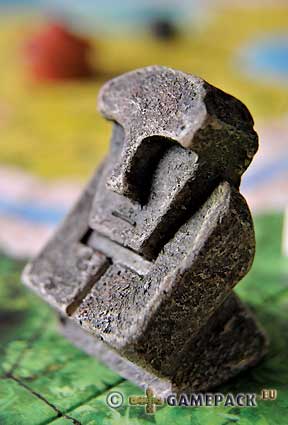 |
|
|
  |
|
|
|
|
|
|
|
|
|
|
|
|
|
|
|
|
|
|
|
|
|
|
|
|
|
|
|
|
|
|
|
|
|
|
|
|
|
|
|
|
|
|
|
|
|
|
|
|
|
|
|
|
|
|
|
  |
Beautiful executed family game with lots of atmosphere |
|
|
|
|
|
|
|
|
|
|
|
  |
Not too long or overly complex, and surprisingly entertaining |
|
|
|
|
|
|
|
|
|
|
|
  |
|
|
|
|
|
|
|
|
|
|
|
|
|
|
|
|
|
|
|
|
|
|
|
|
|
|
|
|
|
|
|
|
|
|
|
|
|
|
|
|
|
|
|
|
|
|
|
|
|
|
|
|
|
|
|
  |
Performs exceptionally well as a family game, but tactical choices are limited |
|
|
|
|
|
|
|
|
|
|
|
| x |
|
|
|
|
|
|
|
|
|
|
|
|
|
|
|
|
|
|
|
|
|
|
|
|
|
|
|
|
|
|
|
|
|
|
|
|
|
|
|
|
|
|
|
|
|
|
|
|
|
|
|
|
|
|
|
|
|
|
|
| x |
|
|
|
|
|
|
|
|
|
|
|
|
|
|
|
|
|
|
|
|
|
|
|
|
|
|
|
|
|
|
|
|
|
|
|
|
|
|
|
|
|
|
|
|
|
|
|
|
|
|
|
|
|
|
|
|
|
|
|
 |
|
|
|
|
|
|
|
|
|
|
|
|
|
|
|
|
|
|
|
|
|
|
|
|
|
|
|
|
|
|
|
|
|
|
|
|
|
|
|
|
|
|
|
|
|
|
|
|
|
|
|
|
|
|
|
 |
|
|
|
|
|
|
|
|
|
|
|
|
|
|
|
|
|
|
|
|
|
|
|
|
|
|
|
|
|
|
|
|
|
|
|
|
|
|
|
|
|
|
|
|
|
|
|
|
|
|
|
|
|
|
|
| x |
|
|
|
|
|
|
|
|
|
|
|
|
|
|
|
|
|
|
|
|
|
|
|
|
|
|
|
|
|
|
|
|
|
|
|
|
|
|
|
|
|
|
|
|
|
|
|
|
|
|
|
|
|
|
|
|
|
|
|
 |
|
|
|
|
|
|
|
|
|
|
|
|
|
|
|
|
|
|
|
|
|
|
|
|
|
|
|
|
|
|
|
|
|
|
|
|
|
|
|
|
|
|
|
|
|
|
|
 |
|
|
|
|
|
|
|
|
|
|
|
|
|
|
|
|
|
|
|
|
|
|
|
|
|
|
|
|
|
|
|
|
|
|
|
|
|
|
|
|
|
|
|
|
|
|
|
|
|